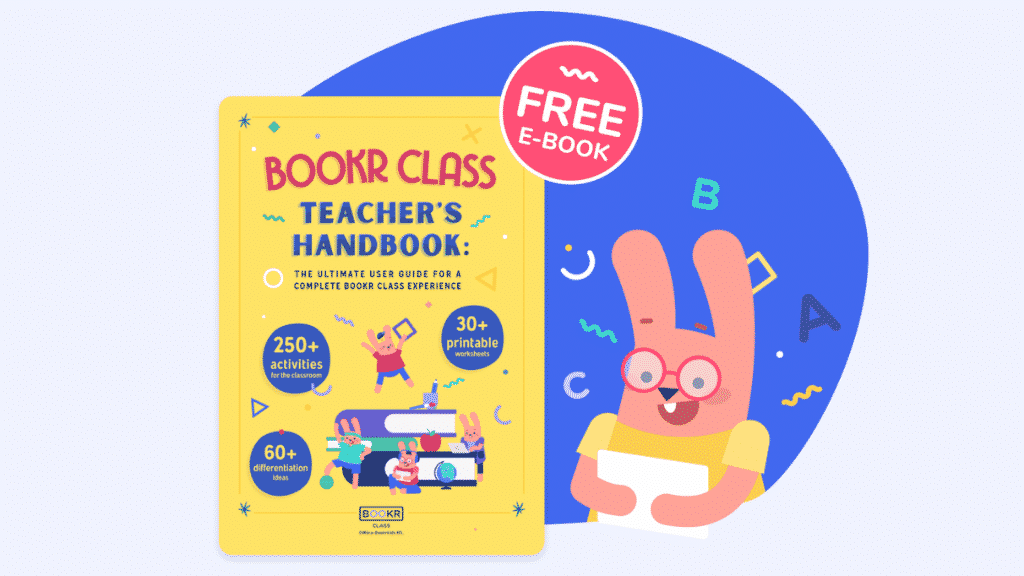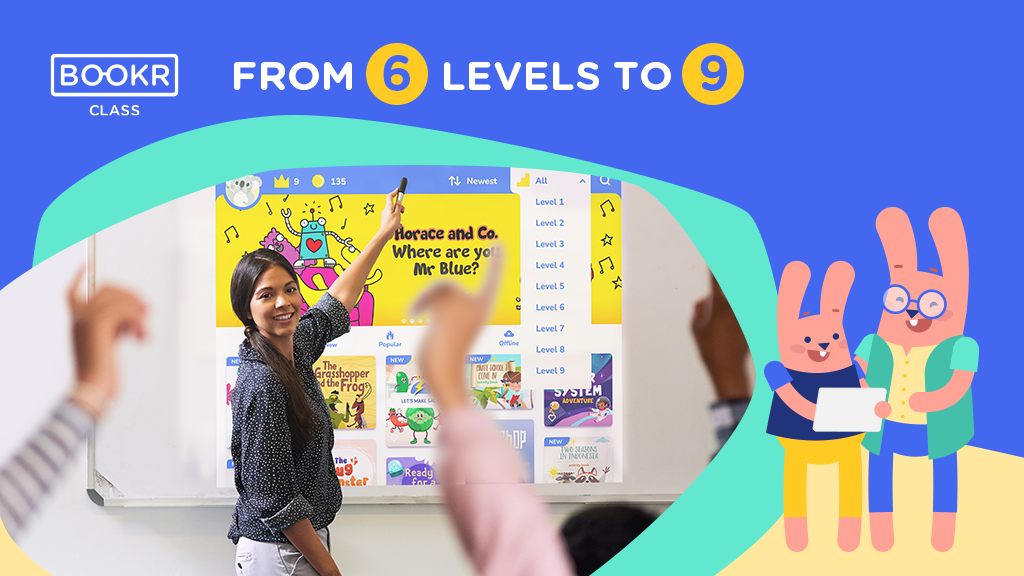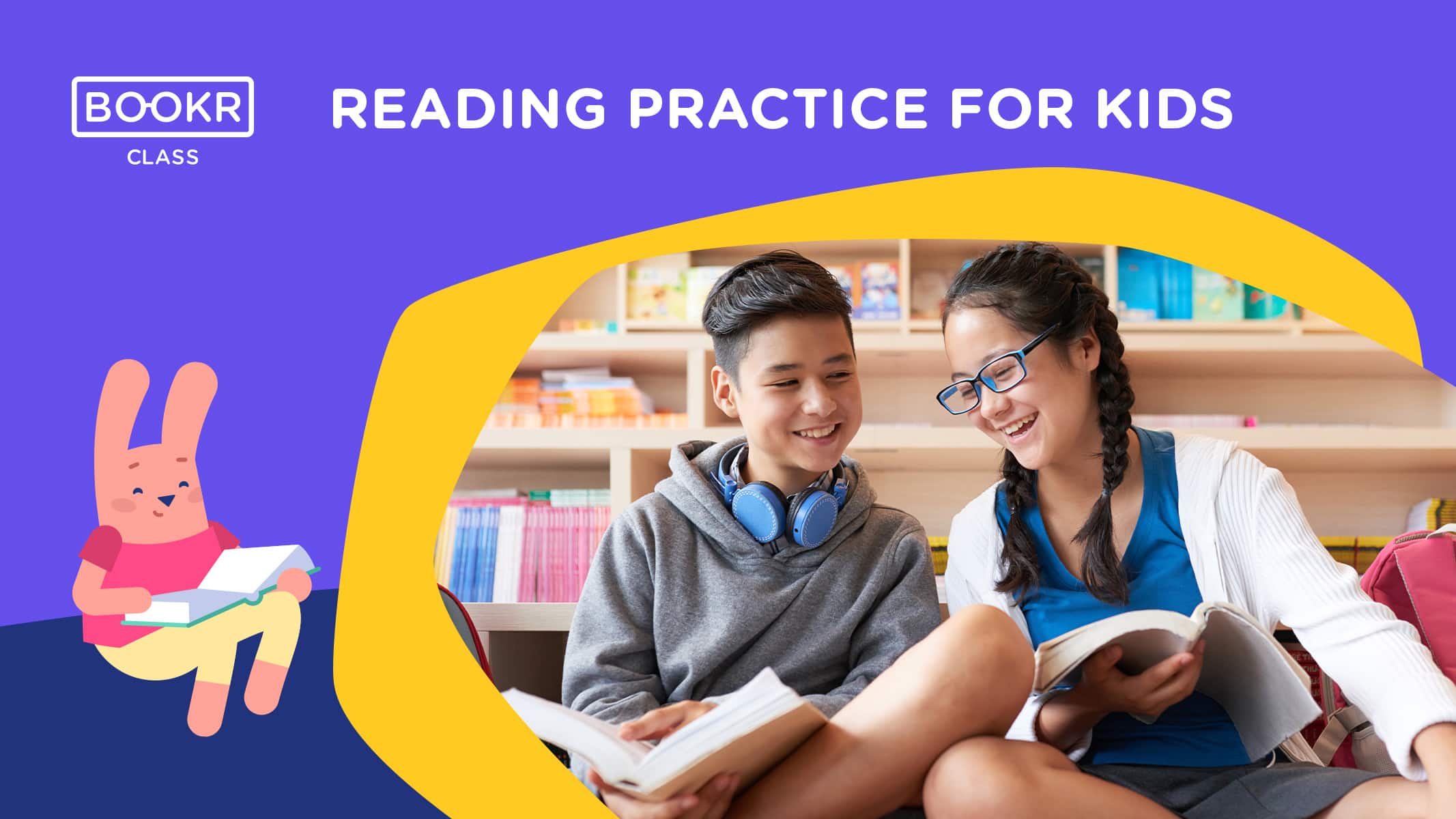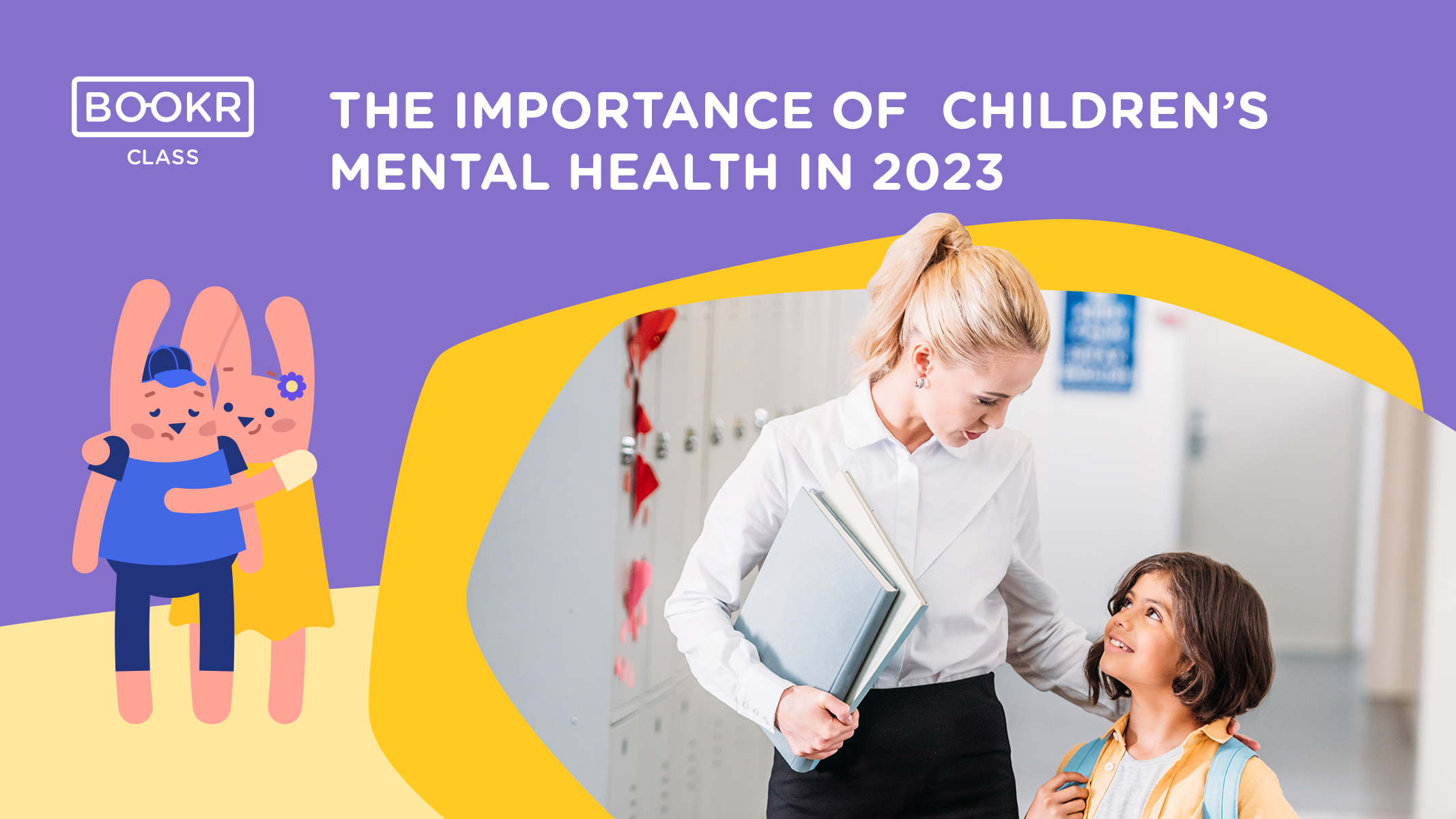BOOKR Class The Teacher’s Handbook for Learning English Through Storytelling
BOOKR’s educational team has been working diligently through the summer. Now they can proudly present the BOOKR Class Teacher Handbook to support teacher users with complex unit plans, activity ideas and printable worksheets to make learning English through storytelling smoother. This book provides practical advice on how to use storytelling effectively in classrooms, including lesson plans built on language acquisition theories, student engagement techniques, and classroom management strategies.

We asked Kinga Krämer and Sara Elbert – the two main authors and -, educational content specialists at BOOKR Kids about the most important frequently asked questions. Let’s see their answers!
1. First of all, what is the Teacher’s Handbook?
The handbook is the ultimate guide for BOOKR Class users on how to implement the app into everyday English lessons. It is a huge bunch of ideas, some grouped according to 21st century skills that can be used with any of our books, and there are also 48 whole lesson plans on more than 300 pages.
2. Why did you write a Teacher’s Handbook?
The Teacher’s Handbook was born out of the needs expressed by BOOKR Class teachers. We had been asked many questions about using the app in the classroom and how to teach with it.
There seemed to be a need for an overview of the levels and books and most importantly, practical instructions for the implementation of the app. So, the aim of this book was to support teachers and assist with preparation, providing as much help as possible.
3. Do I need the Teacher’s Handbook to be able to use the BOOKR Class app?
Of course not. Our teacher users have been doing an excellent job using the app without a handbook. It’s a supplementary document for those who are just starting and need some support or those looking for new ideas from another teacher’s point of view.
What is more, we are acutely aware of the workload of teachers, so we don’t expect them to use all the books with elaborate lesson plans built around them. Our teachers also use the books just for shorter warm-up activities, a quick revision or wrap-up or just as homework, without a sequence of additional activities about them.
You can use the books as a well-earned reward after a particular topic or material, to close your lesson, or simply for reading for pleasure. In fact, some of the ideas for these quick activities are in the last part of the introductory chapter.
4. Who wrote the Teacher’s Handbook?
The introductory part of the handbook was written by the educational team, while the unit plans are the masterpiece from the combined work of 6 teachers from different backgrounds, who were willing to share their expertise with us about how to use the app in lessons. The lesson plans were reviewed and edited by the educational team, so it was a group effort between 6 teachers and us, who have come together with one goal in mind – to provide you with educationally rich material!
5. What can you find in the Teacher’s Handbook?
There is an introduction to the handbook for those who would like to understand the concept and app better, unit plans for 12 BOOKR Class books and the appendix. The first part of the document includes:

On every level there are 2 unit plans, so a total of 12 unit plans altogether. That gives you 36 lessons + the condensed 3 in 1s which are extracts of the three-lesson-long unit plans.
6. How did you pick the books?
We picked two books from each BOOKR Class level. This list of 12 books vary in genre, have different topics and improve the students in different ways besides language teaching (literature, biology, history, soft skills, finances…).
7. What are the methodological guidelines of the BOOKR Class Teacher’s Handbook?
We created the unit plans in the approach principled eclecticism. This means that we combined various approaches and methodologies to teach language depending on the aims of the lesson and the needs of the learners. And of course the communicative approach, which helps to increase student talking time.
8. What does a lesson plan look like?
There is always a warm-up activity, to recall the students’ previous knowledge and we raise interest, then we make the students work and think to deepen their understanding and improve their language skills. It is followed by a wrap-up exercise and there are also planned activities for evaluation. Here the students mainly evaluate each other or their own work during the lesson.

9. What do you consider a ‘unit plan’?
A unit is a 3 lesson long complex session which guides the students and the teacher through a BOOKR book. Relying on the students’ language level we planned a lesson to introduce the book. Then comes a lesson with a chosen focus (comprehension, grammar…) and the last one is centered around language production.
We also take into account those who don’t have the opportunity to work with a book for three lessons. A condensed lesson is a plan for one lesson, which gives a shorter but the same quality experience with the topic and the book.
10. Are there any ideas for individual differences?
To satisfy individual preferences, there are cross-curricular activities that teach other subject matters, such as biology, geography, history. There are many content and language integrated activities that use language as a tool to teach about a historical period, the parts of animals or a recipe, for example
Learning styles and individual differences are taken into account in the variety of activities. The needs of audio-visual learners are met with interactive books, kinesthetic learners with role plays and inter- and intrapersonal learners with the variety of classroom organization (individual work, pair work, small group work, whole group work and frontal work):
Regarding the learners’ proficiency and skills, the lesson plans also include ideas for differentiation and tiered instruction.
11. Are the worksheets and extra materials included in the Teacher’s Handbook?
Yes, for sure! All the extra materials needed to bring these lesson plans to life are included in the Appendix. There are flashcards, coloring pages, cutout puppets, thought-provoking printable questions, role play cards and much more.
12. Do you need the app to use the Teacher’s Handbook?
All the books are accessible in the BOOKR Class app, so one might think that the Teacher’s Handbook is not that useful for those who haven’t started using the app yet.
However, some of the stories that we chose can often be found in most school libraries, such as the Itsy Bitsy Spider, the Stone Soup or the Yellow Wallpaper. If you would like to compare what you’ve been doing so far when you wanted to work with Itsy Bitsy’s story, you can check our suggestions and see how you and your students could benefit from using the application or the desktop app.
13. When and where will the Teacher’s Handbook be accessible?
If your class or your school is already a BOOKR Class subscriber, we’re sending you a digital copy via email soon. If your school hasn’t subscribed yet, don’t worry. Subscribe now on our website or access the handbook through our webpage. The only thing you need to do is to click on the following link, subscribe with your email address and you can have it for free.
The BOOKR Class Teacher’s handbook is designed for innovative educators looking for ideas how to implement digital interactive books in their curriculum.
One thing is for sure: this Teacher’s Handbook is a unique, quality resource with valuable advice from experienced professionals. If you’re just getting started with BOOKR Class or longing for fresh ideas, the BOOKR Class Teacher’s handbook is just for you!


